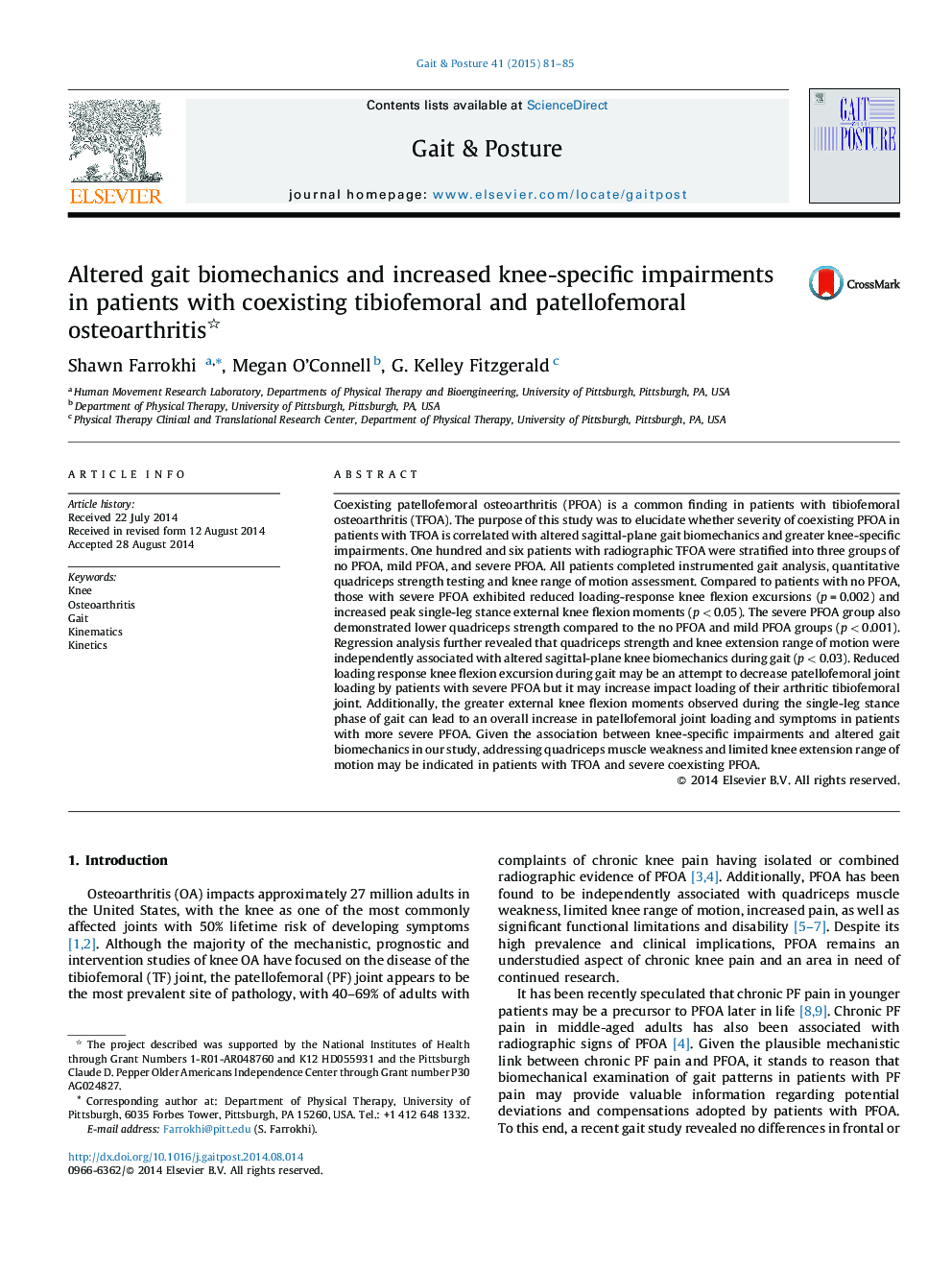| Article ID | Journal | Published Year | Pages | File Type |
|---|---|---|---|---|
| 6205656 | Gait & Posture | 2015 | 5 Pages |
â¢Gait analysis was completed in 106 patients with knee osteoarthritis (OA).â¢Severe patellofemoral (PF) OA was associated with reduced knee shock absorption.â¢Severity of PFOA was also associated with higher single-leg stance knee joint loads.â¢Altered gait was related to quadriceps weakness and limited knee extension motion.
Coexisting patellofemoral osteoarthritis (PFOA) is a common finding in patients with tibiofemoral osteoarthritis (TFOA). The purpose of this study was to elucidate whether severity of coexisting PFOA in patients with TFOA is correlated with altered sagittal-plane gait biomechanics and greater knee-specific impairments. One hundred and six patients with radiographic TFOA were stratified into three groups of no PFOA, mild PFOA, and severe PFOA. All patients completed instrumented gait analysis, quantitative quadriceps strength testing and knee range of motion assessment. Compared to patients with no PFOA, those with severe PFOA exhibited reduced loading-response knee flexion excursions (p = 0.002) and increased peak single-leg stance external knee flexion moments (p < 0.05). The severe PFOA group also demonstrated lower quadriceps strength compared to the no PFOA and mild PFOA groups (p < 0.001). Regression analysis further revealed that quadriceps strength and knee extension range of motion were independently associated with altered sagittal-plane knee biomechanics during gait (p < 0.03). Reduced loading response knee flexion excursion during gait may be an attempt to decrease patellofemoral joint loading by patients with severe PFOA but it may increase impact loading of their arthritic tibiofemoral joint. Additionally, the greater external knee flexion moments observed during the single-leg stance phase of gait can lead to an overall increase in patellofemoral joint loading and symptoms in patients with more severe PFOA. Given the association between knee-specific impairments and altered gait biomechanics in our study, addressing quadriceps muscle weakness and limited knee extension range of motion may be indicated in patients with TFOA and severe coexisting PFOA.
